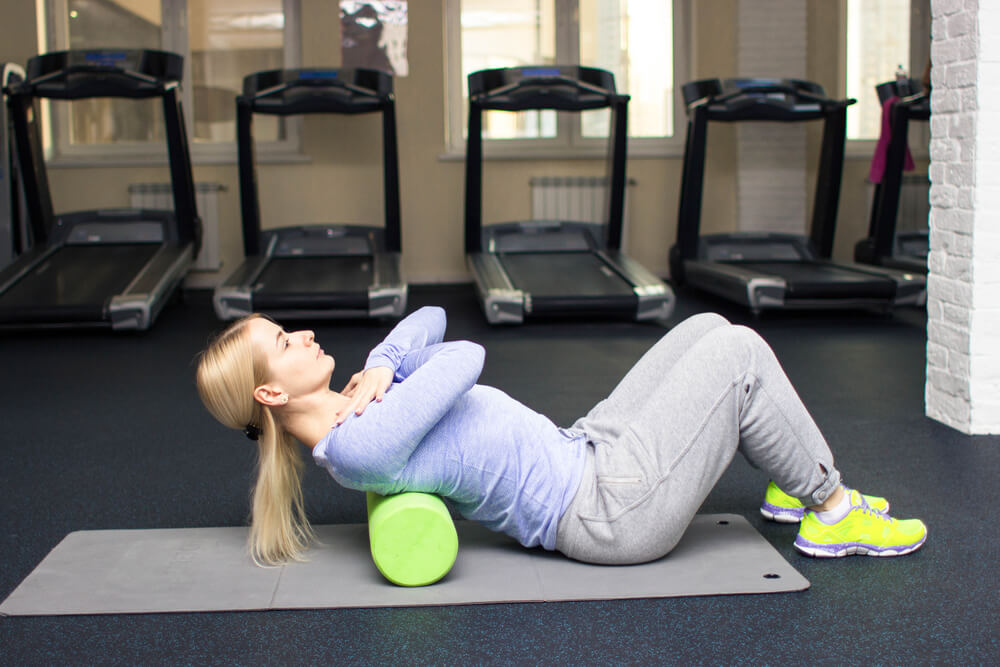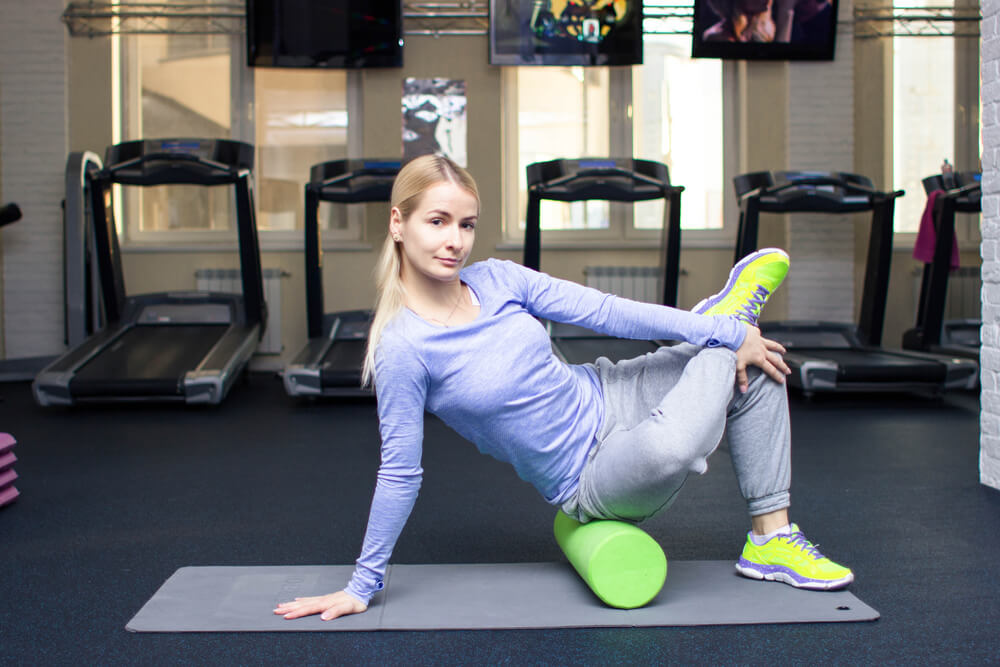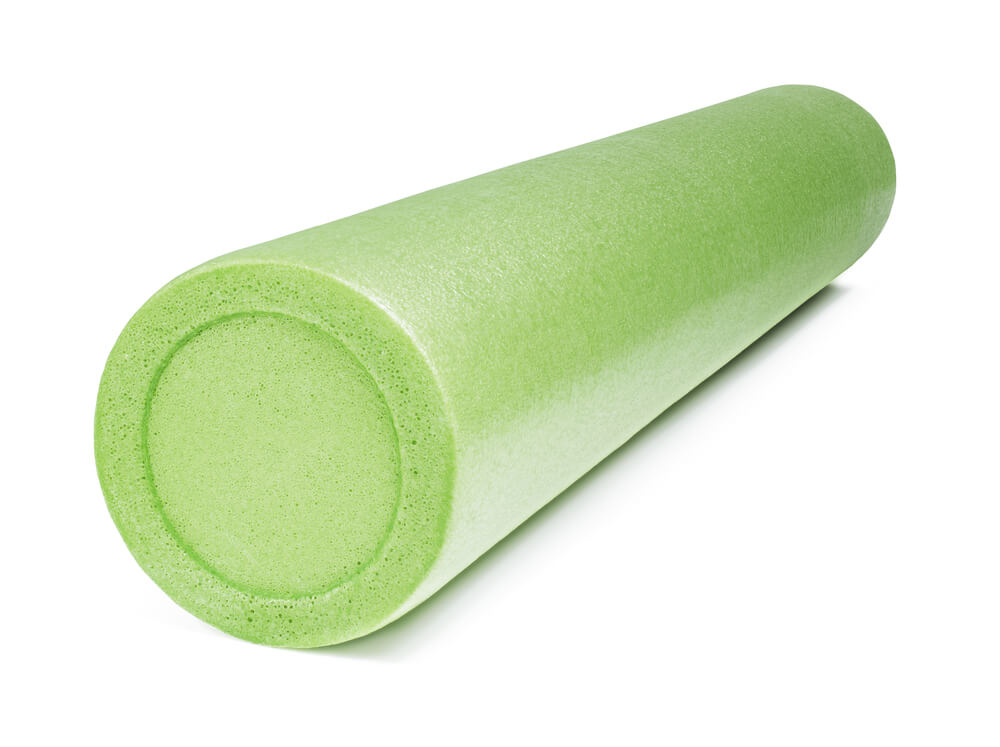
If you are like most people, you may not know a great deal about myofascial release. We aim to change that. How? We give you all the info you would ever want to know about it. You’re welcome!
Myofascial release is a different type of therapy. It concentrates on releasing tension that contributes to acute pain. The term myo refers to the muscles. Meanwhile, fascial in this context is a reference to the network of tissue that binds the muscles together. The technique uses a holistic approach, one that can help ease pain caused by strain from intense physical activity or injury.
The treatment aligns the muscles and fascial tissue by manipulating the body into positions that allows them to unwind. This treatment has been effectively used for hundreds of years.
What Is Fascial Tissue?
The body’s fascial system is a complex network of tissue that surrounds joints and muscles. It is an elastic collection of membranes that connect and support muscles. When tension builds up as a result of injury, the tissue becomes stiff. This causes pain. Using a system developed by John F. Barnes, PT, tension is released in the pressure points that cause discomfort, and also in other areas of the body that contribute to the discomfort.
This is a crucial point to understand. The muscles in the body, and the tissue that connects them operate as a whole. When one part is injured, others are unbalanced. To help the body recover, tension needs releasing at these trigger points in addition to the painful areas. The trigger spots that cause pain are located globally. During myofascial treatments, therapists search for the stiff tissue to release stress in parts of the body that are affecting the inflamed areas.

How Is This Different From Traditional Treatments?
Using traditional physical therapy including massage, professionals treat the parts of the body that hurt. With that said, they do not look for other areas that cause the pain. The fascial system is connective tissue, and for any treatment to be effective, it needs to be treated collectively.
The theory behind the treatment is that pain develops from pressure points. But, these hot spots are the result of stiff fascial tissue all over the body. To effectively heal, the tissue around all joints and muscles needs treating.
During the myofascial release treatment, a therapist stretches and kneads stiff tissue using a variety of techniques. For instance, for those being treated for headaches, the hips and lower body are manipulated, releasing the tension that causes the aches in the neck and head.
This treatment differs from a massage.
Why?
In this type of treatment, the patient is an active participant.
How?
A therapist asks you to move your body into different positions that are designed to release tight spots, aligning muscles naturally.
The other major difference between traditional and myofascial therapy is the amount of pressure applied. In myofascial treatments, light massages replace heavy, deep massage techniques. Since the fascial tissue is located close to the surface of the skin, this method effectively eases pressure without causing undo discomfort.
What About Meds To Treat The Pain?
The John F. Barnes system is designed to augment the traditional methods of treating pain. Like physical therapy that focuses on inflamed areas and not the overall tension in the body’s tissue, drugs offer temporary relief. Most find the myofascial technique has a long lasting effect, helping to relax the body with continued use.

Who Benefits From The Myofascial Release Treatments?
The myofascial release approach is used across the board when it comes to physical therapy. Athletes find it helps for sore muscles or when recovering from an injury. Those who undergo surgery also use myofascial treatment as part of their recovery. They do so by simply visiting a therapist during the months after their procedure.
For those who suffer from chronic pain, the treatment gets to the root of the problem, releasing stiff tissue and easing discomfort almost right away. While this is the case, the treatment goes beyond a quick fix, and continuously using tried-and-true exercises and stretches cuts back on doctor visits, as well as expensive medications.
The practice builds with each session and makes therapy a less intensive undertaking. Using small changes to the body’s position, muscle soreness is decreased and ultimately lessened.
Where Does The Treatment Take Place?
The myofascial release method has been adopted by physical therapists, doctors, outpatient recovery centers, and sports medical centers around the country. Sessions are normally held on an outpatient basis.
How Many Sessions Will You Need?
One of the keys to the approach is the length of treatment. Patients by and large schedule weeks or months of sessions, gradually dialing back the pressure and stiffness, returning the fascial tissue to its flexible state and reducing pain. A typical session lasts up to an hour. Depending on the amount of pain or the injury, sessions can take place a few times a week. They can also be spread out monthly.
Realistically, the practice of myofascial relief is an ongoing endeavor. It is recommended that you take time every day for treatment. You can get these treatments either before or after a workout using pre-prescribed stretches and exercises or in a therapist’s office. Continually flexing stiff tissue breaks it free of bonds with joints and muscles, and returns the fascial system to the right balance.

Can It Help Improve Your Workout?
Using physical therapy is normally reserved for after an injury or when chronic pain occurs. For those serious about working out, signing up for myofascial release treatments can also help prevent injuries.
In order for your workout to be effective, you need to give your body time to recover after training. Stiffness in fascial tissue inhibits this, and using treatment as part of your schedule can help to improve your overall health.
Working out, by nature, puts your body under a lot of pressure. When combined with fascial tissue that does not flex around joints, this can cause back problems and pain from pressure points. Combining a workout routine with myofascial treatments helps your body to both recover from intense training and develop a healthy response to being repeatedly put under strain.
Therapists generally use a few different techniques during a visit. A session usually starts with an interview. It is at this point where a discussion of your health takes place. From there the session continues with a series of movements and positions that stretch your muscles. This includes a light massage to find and free stiff tissue. At the end of a session, the therapist walks you through a series of exercises that helps keep your body limber. Patients are encouraged to use them daily at home, before workouts and after long days sitting in an office.
Some myofascial exercises use foam rollers and balls. These help before or after workouts and use the same principles that therapists employ during treatment. From a seated or lying position, the massage tools are placed under different parts of your body. This puts different sets of muscles into unfamiliar groupings, forcing them to relax and unwind.
Foam balls work well for the upper body. The ball is placed under the shoulders and a stretching for 10 minutes using the position usually produces results right away. Rollers are commonly used under the hips and legs. They work to provide the right amount of support for stretches that loosen up tissue and relieve pressure.
Using these methods, those serious about fitness gain an edge. The low-impact motions release the trigger points that cause pain and discomfort, and let the body get on with the business of rebuilding muscle after a workout.
How Do You Know If It Is Right For You?
The use of myofascial release treatment is far reaching. It is found in almost every aspect of physical therapy. Doctors suggest it for serious back problems, for those recovering from injuries and for athletes. They also advise people to get it when pain appears as a result of overstraining during exercise.
In practice, myofascial release treatment is good for anyone. The exercises and techniques are low impact. They have the immediate effect of alleviating stress and pain without costly drugs or intensive massages.
Many who have had little success with traditional methods of healing have found better results with these treatments. If you are struggling with pain and think that the John F. Barnes technique would be beneficial to your recovery, you should talk to a trained therapist about the best course of action. There are different exercises for each part of the body, and finding the right routine makes a big difference.

Where Can You Find A Trained Therapist?
As myofascial techniques are found in a number of medical disciplines, hospitals across the country now use it as part of their outpatient services. Over 100,000 therapists have been trained by the Barnes Center, and they can help you find the right fit for your needs in your area. The Center also treats patients and has a list of ailments on its website that they have helped to heal.
Each therapist and center uses his or her own specialized treatments. A sports medicine center uses a different technique than a hospital outpatient center. Because of this, it is vital to find out as much info about the specific types of ailments that the staff are trained to treat.
For example, orthopedists use myofascial techniques to treat bones and ligaments that are far more comprehensive than a sports therapist’s methods. The practice is multifaceted and being clear about your needs at the onset can save a lot of time and confusion down the road.
A good therapist interviews each patient and makes a custom schedule. They will also recommend specific treatments. Take the time to ask questions. You should also be sure to let your therapist know if you think something is amiss.
Conclusion
Myofascial release treatments are successful, proven methods that give your body the right balance when recovering from intense workouts, an injury or even surgery. Unlike traditional techniques, the easy to learn routines make a long lasting impression, easing pressure points and relaxing muscles and tissue.
When practiced regularly with the help of an experienced therapist, myofascial release treatments yield results. After a workout, this means reducing the strain on your body while it recovers. For chronic pain, an appointment at the local health center brings relief that does not require a doctor’s prescription.
The widespread use of the low-impact treatment means that there are a number of different specialists that can treat a variety of ailments. To find the right fit and help reach your goals, try the local hospital or talk to a personal trainer or physical therapist.
Beyond the scope of one-on-one sessions, using a few inexpensive tools and learning a simple routine to use before or after a workout brings a new aspect to fitness. These exercises give your body the help it needs to function at its best. And, with continued use it could make a noticeable difference.
Simply put, taking 20 minutes each day to stretch using myofascial techniques means that you should be able to workout longer, with a reduced risk of injury and without worrying about discomfort. When the inevitable aches and pains from taxing exercise do appear, finding a therapist who knows your needs will get you on your feet and back in the gym faster.
Making the most out of your time exercising is a vital part of keeping fit. Whether it is in the gym, on the field, or jogging before work, myofascial release therapy and exercises help to ease the demands that physical activity puts on your body.The treatments are both practical and effective and could be right for you.
By Jon Jared
Terry
Latest posts by Terry (see all)
- How Important Are Net Carbs For Building Huge Muscle? - Apr 28, 2017
- The Matt Damon Workout Explained - Apr 27, 2017
- Watercress – Benefits And The Best Way To Consume It - Apr 26, 2017











